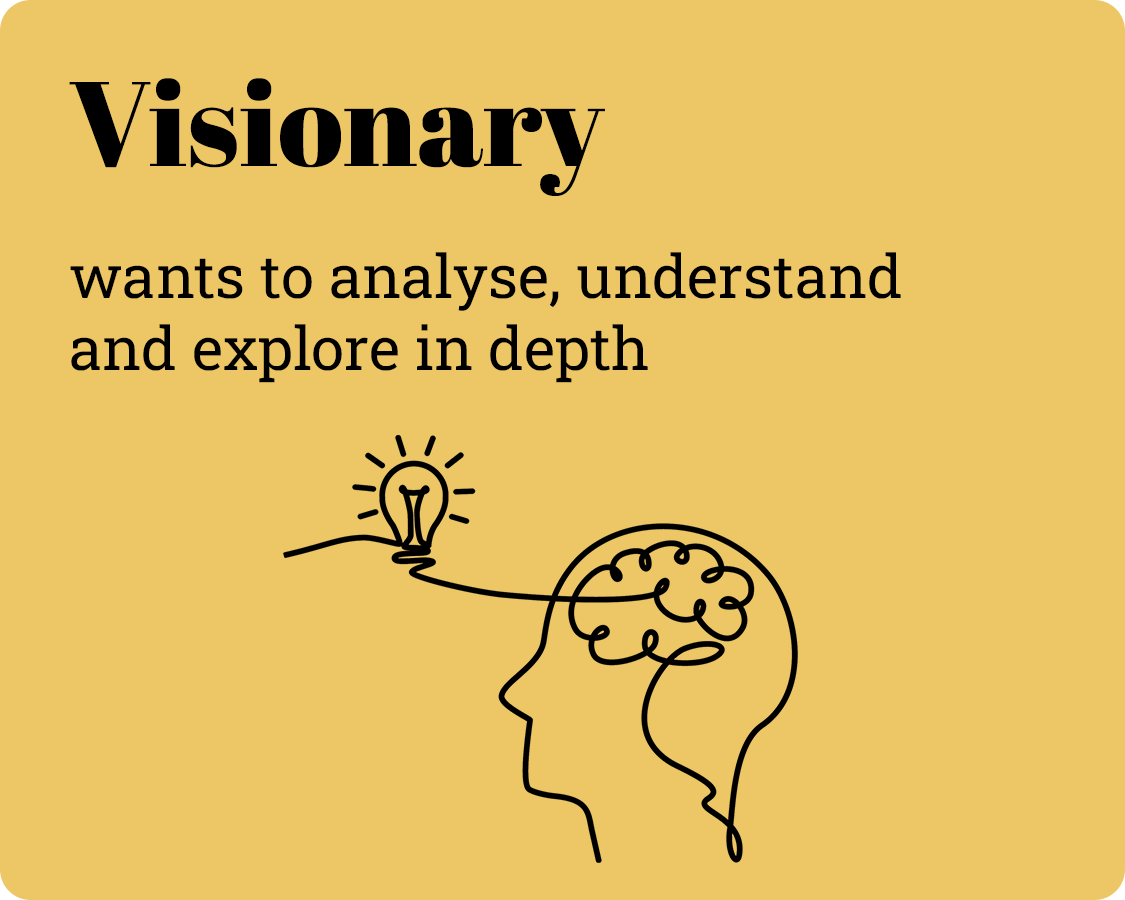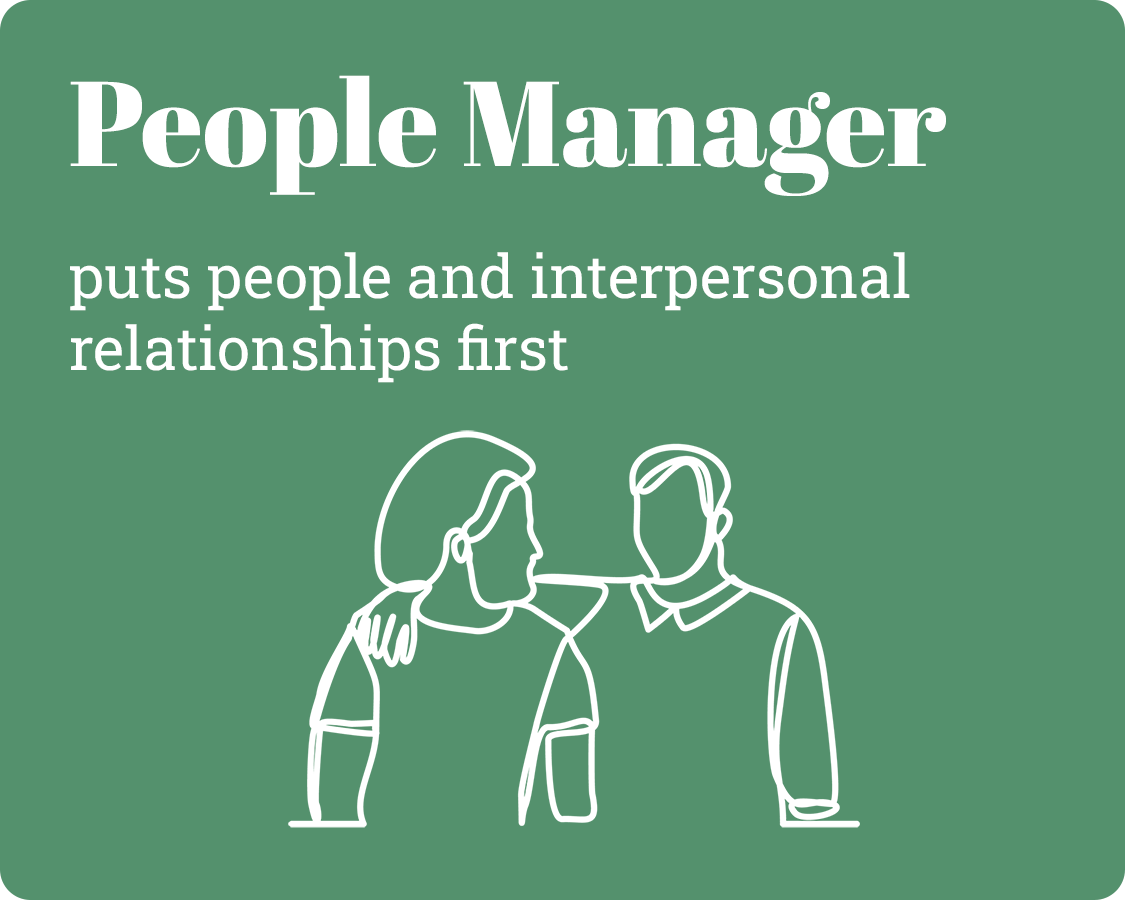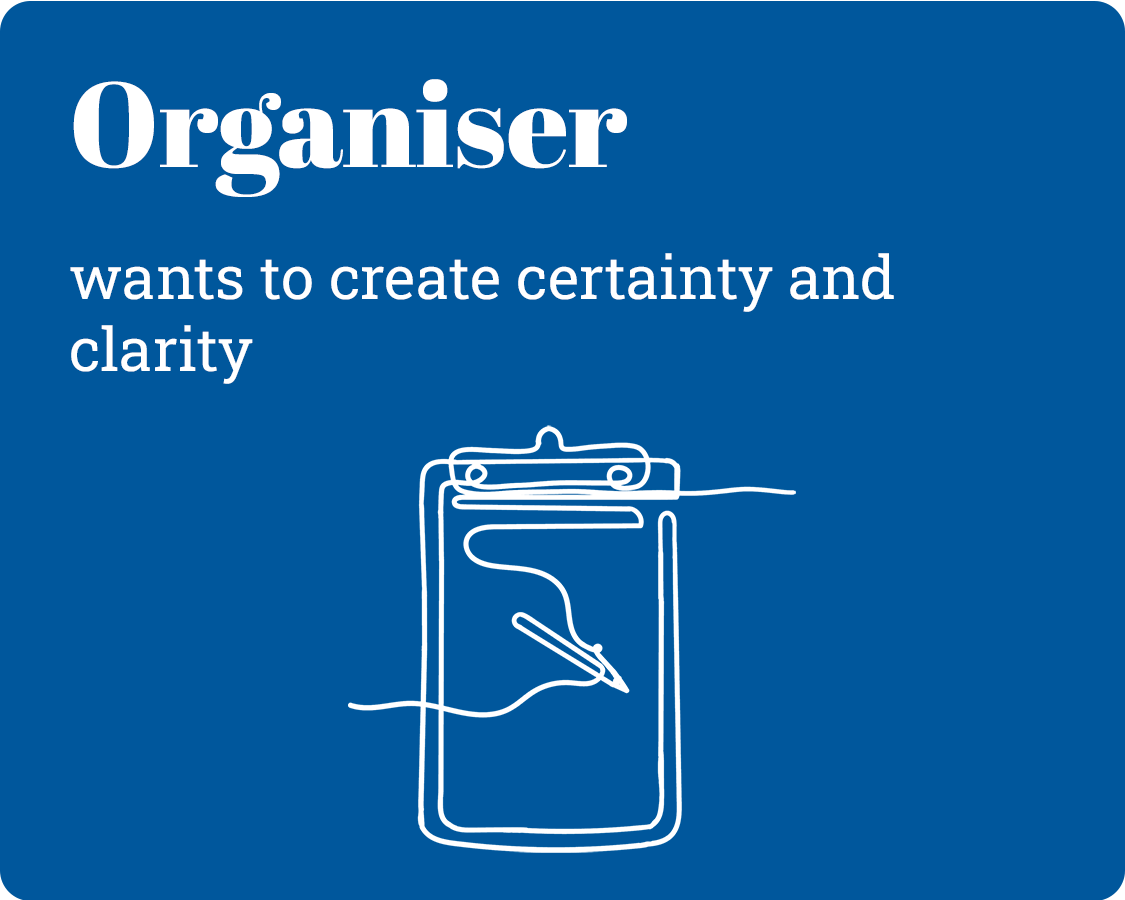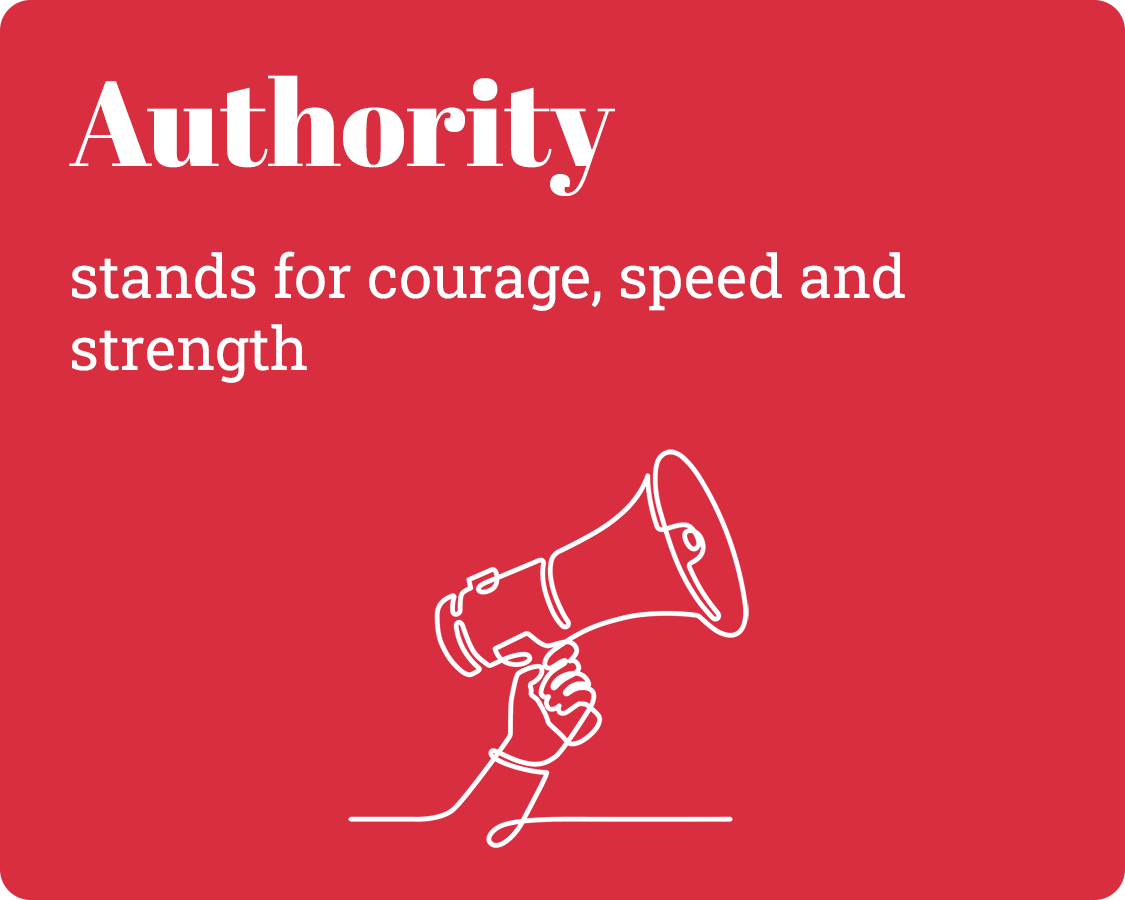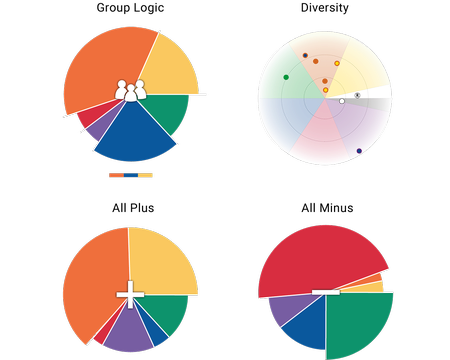By knowing each other’s strengths, you can grow together
The Management Drives software measures and provides insight into what motivates a team or person. The Management Drives software thus offers a communal language to enable behaviour to be discussed and to use the strength of the team and each individual. Management Drives uses a language with six colours, uniquely presented in a matrix. Each colour stands for a style of leadership or organisational culture.

Management Drives theory
Drives are motivators that predict how a team or person uses their knowledge, skills and competences. The theory of Management Drives is based on the studies of Clare W. Graves (1914 – 1986) and is already automated at an early stage. Graves based his theory on Jung and Maslow. Our six colours each have their own meaning at organisation and team level and for someone’s personal leadership.
Management Drives is unique because it makes a connection between:
- Organisational development and culture
- Team development
- Individual Leadership
The Matrix
Management Drives is unique in the use of the Matrix. With the six drives, the Matrix is a unique reflection that may only be used by Management Drives. The Matrix makes it very easy to reflect and connect drives, behaviour, cultures and developments. The colours and the applications are easy to remember for the users of Management Drives. This makes the use of Management Drives effective and efficient.
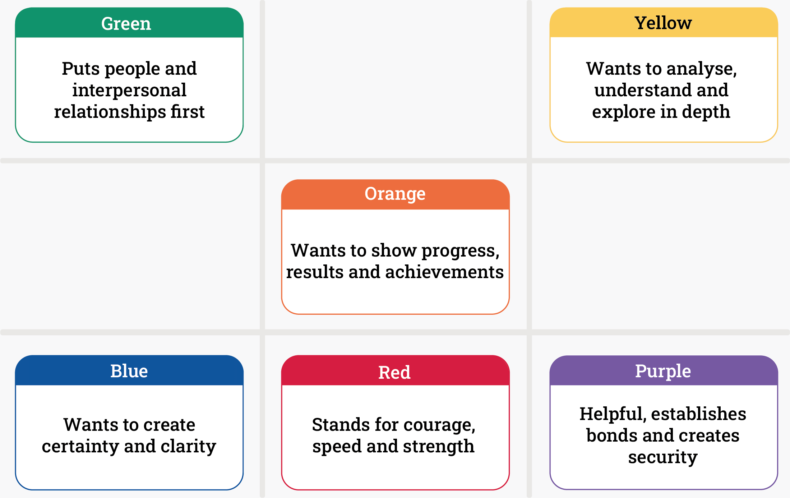
Organisational development
Management Drives distinguishes itself by its applications at organisational level. Drives determine how people act. Drives show which parts of the organisational development naturally receive more or less attention. Each colour stands for a step in the development of your organisation. All the steps in the organisational development are important. The phase in which an organisation finds itself and the context determine where more or less attention should be given.
However, the individual and team profiles determine where the natural attention is focused. This insight means that conscious attention can be devoted to each step in the organisational development, based on the interests of the organisation.
- Step 1, Purple Yellow:Mission and vision relates to who we are and where we are going. Identity, core values and being proud are expressly linked to the purple drive. Vision, long-term developments, the environment and the broader perspective expressly belong to yellow.
- Step 2, Orange Red:Strategy and focus, translates mission and vision into concrete strategy and goals to be achieved. We must determine the risks and what we will and will not do. Making choices, focusing.
- Step 3, Blue Green:Organise and communicate, concerns determining the working method in which we will achieve the formulated goals, what agreements will be made for this and how we ensure that people are and remain connected.
Important elements in step 3 are also embedding the direction, strategy and agreements. This is about creating bonds between the individual, team and the organisation.
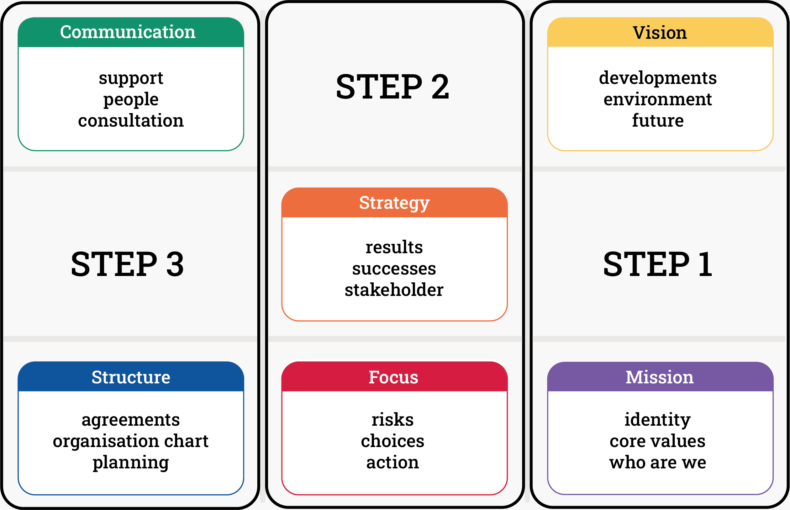
Team profile
Organisations exist because people work together. The question is just how people work together optimally. How do you ensure that people are optimally motivated, enhance each other and speak each other’s language? Insight into each other’s individual profile is a first step. A team profile gives insight into the drives of a team.
A team profile is a sum of several individual profiles. This identifies the strengths and pitfalls of this team, what motivates and demotivates this team. With this insight it is possible to improve the team’s performance and boost the energy in a team.
- Group logic indicates what motivates this team, what the strengths and pitfalls are.
- Diversity shows how different the members of the team are.
- All plus is what gives the team energy and how it can be motivated.
- All minus is what takes energy from the team.
Individual profile
An individual profile is the result of the survey software, presented in four recognisable graphics: Logics, Rejection, Energy Balance and Mindset.
- Logic is the sequence in which someone is motivated.
- Rejection indicates what disturbs someone.
- The Energy Balance shows where someone gets their energy from or where they lose energy.
- Mindset is what possible behaviour is demonstrated by someone under pressure.
Do you want more information about our method? Sign up here for the MD Experience. During this free online session one of our consultants will tell you more about the method and the practical application of Management Drives.
What do you want to develop?
Management Drives makes leadership tangible and applicable.
We successfully apply our knowledge to both timeless and current themes. What do you want?
